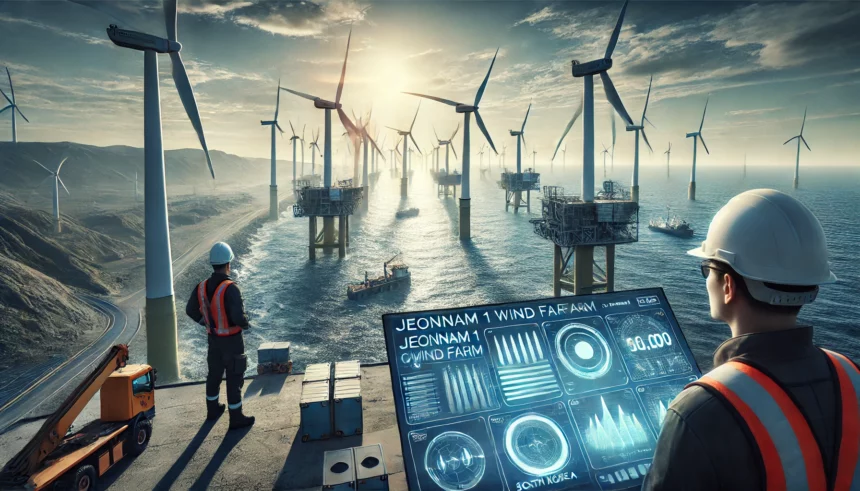Offshore wind energy is making waves in South Korea with the Jeonnam 1 Offshore Wind Farm (OWF). This project is more than just a collection of turbines; it represents a significant leap forward in engineering and design, pointing the way to the future of offshore wind energy.
Jeonnam 1 OWF: A Landmark Project
Key Facts:
- Location: Off the coast of Shinan County, Jeonnam Province, South Korea
- Capacity: 99 MW, doubling South Korea’s current offshore wind capacity
- Partnership: 51-49 joint venture between SK E&S and Copenhagen Infrastructure Partners (CIP)
- Households Powered: Approximately 60,000
Jeonnam 1 OWF is South Korea’s first commercial offshore wind farm, nearing completion with the first power expected later this year. This project not only adds significant clean energy to the Korean grid but also sets a precedent for future developments in the region.
Overcoming Engineering Challenges
Seabed Mobility
One of the major hurdles faced during the design phase was dealing with significant seabed mobility, where the seabed is prone to erosion or sedimentation over time. This required a robust foundation design to ensure the stability and efficiency of the wind turbines.
- Water Depth: 5 – 20 meters
- Foundation: Steel monopile foundations with an 8-meter diameter
- Scour Protection: Essential but challenging due to seabed mobility
Tailored Scour Protection
To address these unique conditions, extensive physical model tests were conducted. Collaboration between the project owners, transport and installation contractor, COWI, and Deltares, a leading institute from the Netherlands, led to the development of an optimal scour protection solution.
Digital Tools: Transforming Offshore Wind Design
Digital tools played a crucial role in overcoming the complex environmental challenges of the Jeonnam 1 project. These tools are paving the way for more efficient and cost-effective offshore wind farms.
COWIND Digital Toolchain
COWI’s COWIND Digital Toolchain optimizes the design of monopile foundations by considering thousands of parameters. This cloud-based platform allows for scalability and adaptability, ensuring adherence to ISO 9001 requirements.
Other Essential Tools
- COPILOD: Generates design drawings and reports, reducing production time and costs by up to 80%.
- COSPIN: Used for geotechnical design checks.
- COWAL: Generates wave loads, improving design efficiency.
These platforms streamline the design process, reduce costs, and enhance efficiency, making them indispensable for future offshore wind projects.
Innovative Installation Solutions
Jeonnam 1 OWF also features innovative installation methods to ensure foundation stability:
- Monopile Installation: Driven to target depth with an impact hammer.
- Rock Socket Formation: Combining monopile, insert pile, and grout annulus to create a robust foundation.
COWI’s experience with drilled monopile foundations was crucial in making strategic decisions to ensure adaptability and resilience to the site’s conditions.
The Future of Offshore Wind
The advancements seen in the Jeonnam 1 project highlight the importance of digital tools and innovative solutions in the offshore wind industry. As the industry continues to grow, the integration of these technologies will be key to overcoming challenges and maximizing efficiency.
- Scalability: Digital tools allow for projects to be scaled up efficiently.
- Cost Reduction: Optimized designs and streamlined processes reduce overall costs.
- Standardization: Uniform foundation designs simplify manufacturing and installation.
Jeonnam 1 OWF is not just a milestone for South Korea but a blueprint for future offshore wind farms worldwide. By embracing digitalization and innovation, the offshore wind industry is poised for a bright and sustainable future.
















